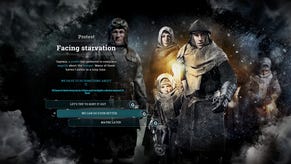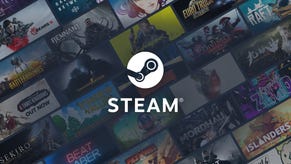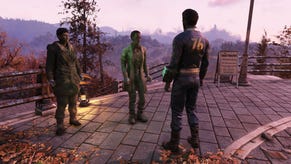Building PUBG hype on a $0 marketing budget
Lead community manager Sammie Kang explains how Bluehole cultivated a devoted following of PlayerUnknown's Battlegrounds streamers from scratch
For many people, PlayerUnknown's Battlegrounds was a success story that came out of nowhere. But as PUBG Corporation lead community manager Sammie Kang explained in a Game Developer's Conference talk today, that "out of nowhere" success was actually the result of a months long "community snowballing" campaign leading up to the game's March 2017 launch into Early Access.
In 2016, PUBG Corporation was still known as Bluehole Ginno. It had a staff of about 25 people and a core team that worked together for about a decade on the online game Devilian. They had a tight bond and worked well together, but they had never made a shooter of any kind, much less a Battle Royale game like PUBG, and they were tasked with rushing a stand-alone Battle Royale shooter to market in about a year, and they had marketing budget of exactly $0 to make it work.
"We were very insecure about showing this build and thought people aren't going to be happy or they're not going to have confidence in us. But it was a privilege because you had to be invited"
With that in mind, Kang said the developer took some very deliberate steps to best position the game to succeed with the advantages it had. For one, it had Brendan "PlayerUnknown" Greene, a mod developer known for his work on the Arma 3 Battle Royale mode and H1Z1's King of the Kill mode. It also had a game concept--Battle Royale--that leant itself well to streaming or sharing on YouTube because viewers could follow one player's journey from beginning to end to become the last person standing.
"We had to be at least mildly successful on Twitch to promote our game with a $0 budget," Kang said. "And we knew this could be our go-to marketing strategy from the very beginning."
Without a lot of hype around the game and H1Z1 still dominating the market, they also knew there was skepticism about the studio's ability to deliver on the game. To fight that, they would have to reach out to people who would support them because that initially small group would be the ones to amplify their message and support the game in the long run.
What was also important was that content creators are always looking for new content," Kang said, "especially the lower tier ones who are looking for something that's unique to differentiate their channels. A lot of bigger, top-tier streamers will only play your game if it's mainstream, or if it will grow their viewership as well, or if it's a hot topic of the week."
Bluehole didn't have the money to pay the streamers to play PUBG, but figured the mid-tier streamers would be interested because they wanted something to differentiate their channels and create something unique, but don't have the resources or connections to have access to exclusive content for AAA studios. That was an opportunity for a mutually beneficial relationship, Kang said, noting that they could give those mid-tier streamers exclusive access and content, and in return those streamers would do their best to promote the game into a big deal because they already had exclusive access to it.
After four months of development, the game was ready for a closed pre-alpha and it was time to put their approach to the test. The pre-alpha was in rough shape, so much so the development team agonized about whether or not it was ready to show the outside world, but an NDA the testers agreed to kept video and screenshots of the early game from surfacing online. They registered 1,100 testers for the sessions which comprised 6 hours of testing spread over several days, and about 600 people eventually participated.
"We made it a privilege," Kang said. "We were very insecure about showing this build and thought people aren't going to be happy or they're not going to have confidence in us. But it was a privilege because you had to be invited. You had to be a streamer, Brendan's long-time fan, or you had to have good PCs to be able to test that alpha build because it was very heavy back then.
"When you send cold emails, they don't really read it or get interested unless it's something they've heard of. But what really works is if they watch their fellow streamers streaming the game on Twitch and they don't have access? They want it"
That exclusivity worked very well for them, especially when they set up a private Discord server for testers where they shared information that wasn't public and not being communicated to the press. That helped with engagement, and gave Bluehole a good line of communication to ensure every tester understood it was a very early version of the game and a work-in-progress.
A couple months later, they moved to the first proper alpha, and wrestled over the idea of whether they should forego the NDA this time around.
"We were insecure again," Kang said. "Do we want to show this to the public? This time it was even more scary because if we lift the NDA, everyone will see the game on Twitch and we were not very confident that this was at a stage where we can show it to thousands and millions of people. But at the end of the day, we knew that we were just showing progress, and we had to build some sort of hype towards beta and the next alpha."
The lifting of the NDA also helped reinforce the sense of exclusivity for the core community. They could stream and share what they were doing, and their audience wasn't able to play right away; they knew they had to be invited to join in.
For the second alpha test, which ran across four weekends in mid-November and early December of 2016, Bluehole opened it up to a bigger group of testers. They identified more potential testers and streamers, and started trying to draw the attention of top-tier streamers by sending cold emails.
"When you send cold emails, they don't really read it or get interested unless it's something they've heard of. But what really works is if they watch their fellow streamers streaming the game on Twitch and they don't have access? They want it," Kang said. "They want it, and they'll find you on Twitter to ask you for keys. That's what started to happen in our alpha."
Kang was giving out so many keys to streamers through Twitter direct messages that during the closed beta she actually discovered there is a limit of between 300 or 500 DMs in a day, and the service shuts off your ability to send more until the next day.
"[Streamers] really want to talk to the developers...They don't want to talk to your PR guy"
The second alpha test also saw Bluehole enlist some external teams to help identify more streamers they could target with keys, but they didn't have hire an agency to reach out to those streamers.
"[Streamers] really want to talk to the developers," Kang said. "They really appreciate it when you approach them and give them information. Even if it's just a couple Twitter DMs, they want to talk to the developers or the community manager. They don't want to talk to your PR guy."
That helps build personal relationships, Kang said, especially being responsive to their requests at all hours of the day. If you're engaging with them directly even after your game has traction, they will remember that and help you to distribute more keys and talk positively about the game.
The rewards for streamers need to be more than just acknowledgement and responsiveness. Access to the developers and the private Discord and the like is part of that reward, but during the closed beta, Bluehole tried to help them out in other ways. For example, they added graffiti logos from many of their top streamers to the game. They also ran ads featuring loyal fans and streamers' most entertaining moments playing the game, distributed beta keys through streamers' channels, and not just acted on streamer and player feedback, but tried to give them personal credit for their suggestions when they were acted upon.
To better understand what streamers and viewers wanted from their content, Kang also spent three months streaming games herself, and watched an inordinate amount of gaming streams. At one point, she was subscribing to 50 different streamers and paying out of pocket to do so, a degree of support she said helped build special relationships with many of the game's most devoted supporters.
"Content creators and Twitch streamers have to be part of your marketing plan if you don't have a budget. They'll help if you build relationship the right way, but they're not marketing tools. A lot of publishers pay them to play the game, but they're not going to be able to build a relationship by doing that. It's a one-off thing. [The streamers] have to be emotionally invested. To do that, you have to commit to building a mutually beneficial relationship with them."








